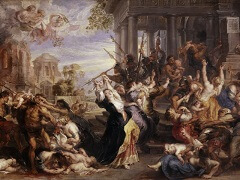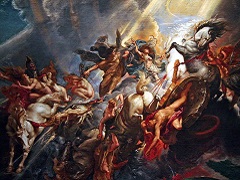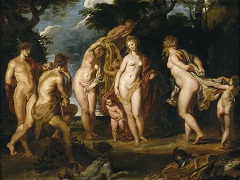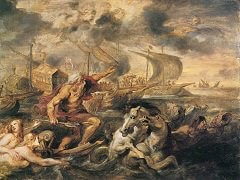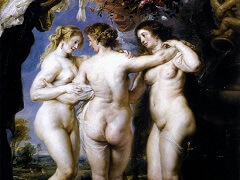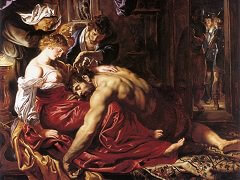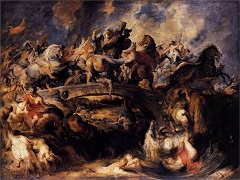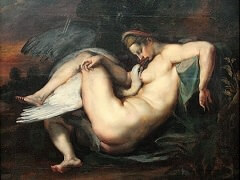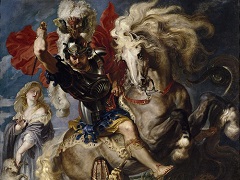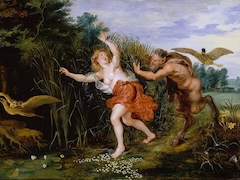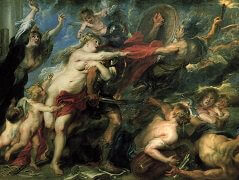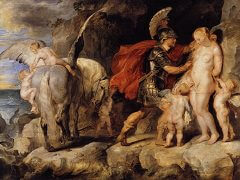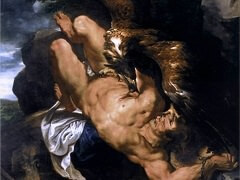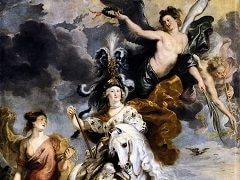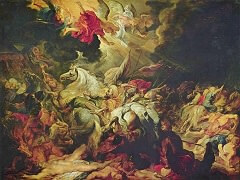The Head of Medusa, 1617-1618 by Peter Paul Rubens
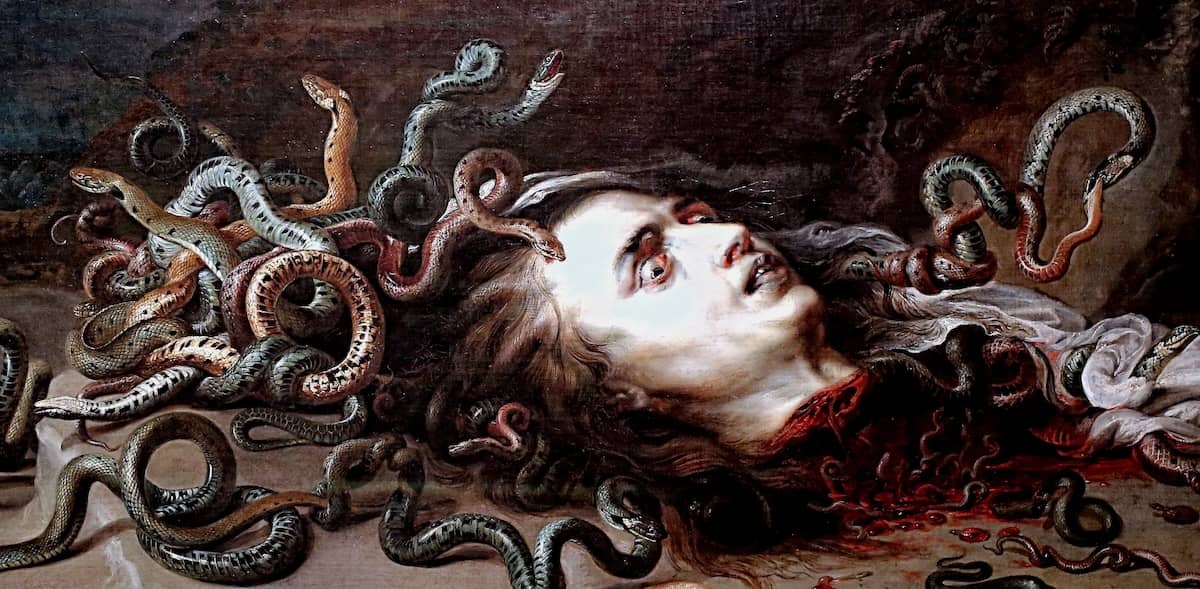
THE DECAPITATED HEAD of Medusa, her serpentine locks writhing hideously, lies on a stony ledge in a landscape. Some of the intertwined snakes bite one another and others give birth, while drops of Medusa's blood are transformed into still other tiny vipers. Medusa's horrible face is wide-eyed and of a deathly pallor. A scorpion, two spiders, and a brightly spotted lizard appear in the foreground. The ground rises steeply at the back right and in the left distance is a landscape prospect.
According to Ovid, Medusa was the loveliest of Phorcys's daughters, particularly admired for her beautiful hair. However after being violated by Neptune in the Temple of Minerva, the goddess turned her hair into a knot of hideous snakes. Gazing upon the face of Medusa would turn one to stone. However the brave and resourceful Perseus snuck up on Medusa while she slept, being careful only to look at her reflection in his shield, and decapitated her with who decorated her breastplate (Aegis) with the deadly image.
Wolfgang Prohaska discussed in detail the tradition of representing Medusa and her iconography in his entry for the painting in the catalogue of the exhibition held in Vienna in 1977. The head of Medusa was most commonly represented in narrative isolation on the shield of Minerva, either in actual sixteenth-century metalwork or in decorative shields painted on wood. The latter tradition probably originated with a lost early work by Leonardo da Vinci which was mentioned in the inventory of the Medici and vividly described by Vasari in 1568. Perhaps inspired by the Leonardo, Caravaggio also produced his head of Medusa on Minerva's shield, which is now in the Uffizi, and which according to Baglione, was sent by Cardinal del Monte to Grand Duke Ferdinand I de' Medici of Tuscany, probably about 1600. In all likelihood Rubens knew the painting by Caravaggio, which he could have seen on his trip to Florence in 1600 or later. As Prohaska observed, Caravaggio's painting was already celebrated in a madrigal of 1602 by Gaspare Murtolas, which drew attention to its apotropaic political aspects. Giambattista Marino's Galleria (Venice, 1620) also emphasized the Grand Duke's association with Medusa, "Che las versa Medusa e il valor vostro." Prohaska further speculated that an icono-graphic aspect, which though not the original reason for Rubens's conception might have appealed to or reason that combats the enemies of virtue. Sixteenth-century emblems also suggest that Perseus with the head of Medusa could embody the idea that acts of glory (and, implicitly, works of art), when achieved through the efforts of wisdom and eloquence, could render humankind rigid with amazement.
Not all interpretations of Medusa were so positive. Karel van Mander, for example, claimed that Perseus was the "reason or the intellect of our souls while Medusa was the wicked carnal desires or natural lusts which transform in mankind all reason, prudence and wisdom into unfeeling stones." Van Mander went on to note Medusa's "ungodly denial of any spiritual covenant" and "unchastity" (an allusion, no doubt, to Neptune's rape in the temple); thus she offers warnings against "misusing God's gifts or dishonoring God or his commandments through pride." Since Medusa was proud of her beauty and especially her hair, Minerva turned the positive or negative one. However in light of the breadth of his own readings in the classics as well as in their exegeses, the appeal of the image's complexity surely was a strong one.



